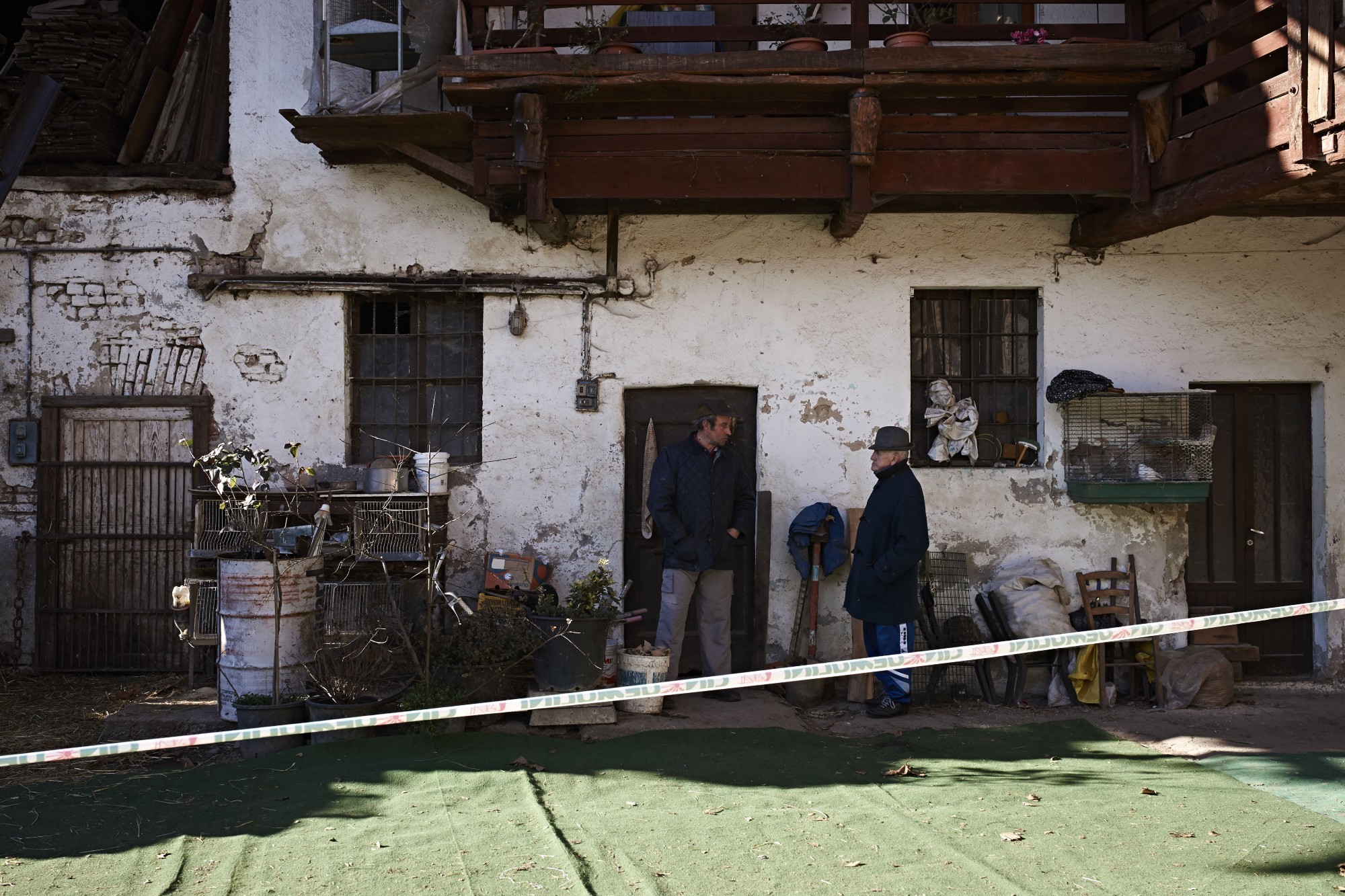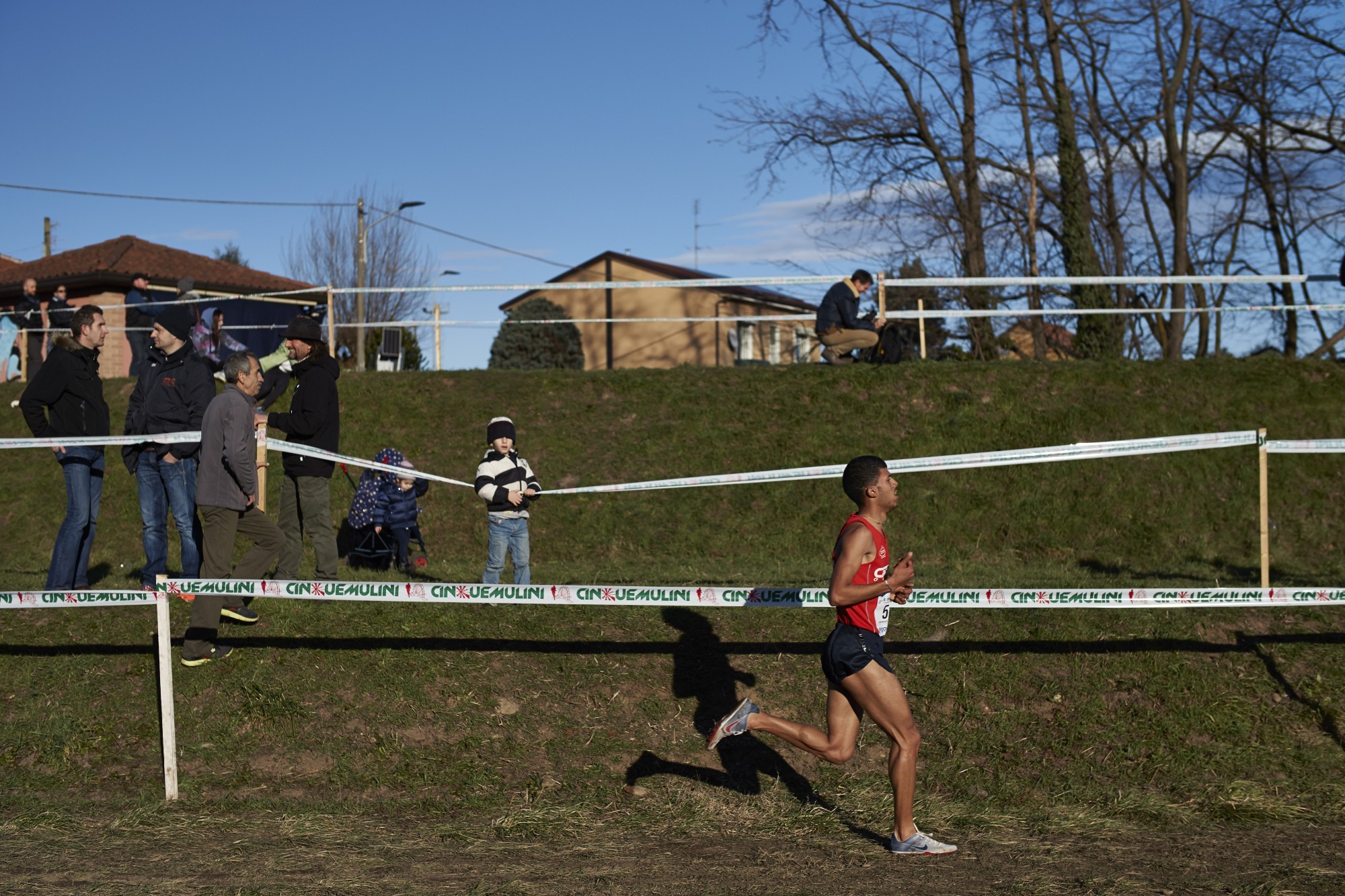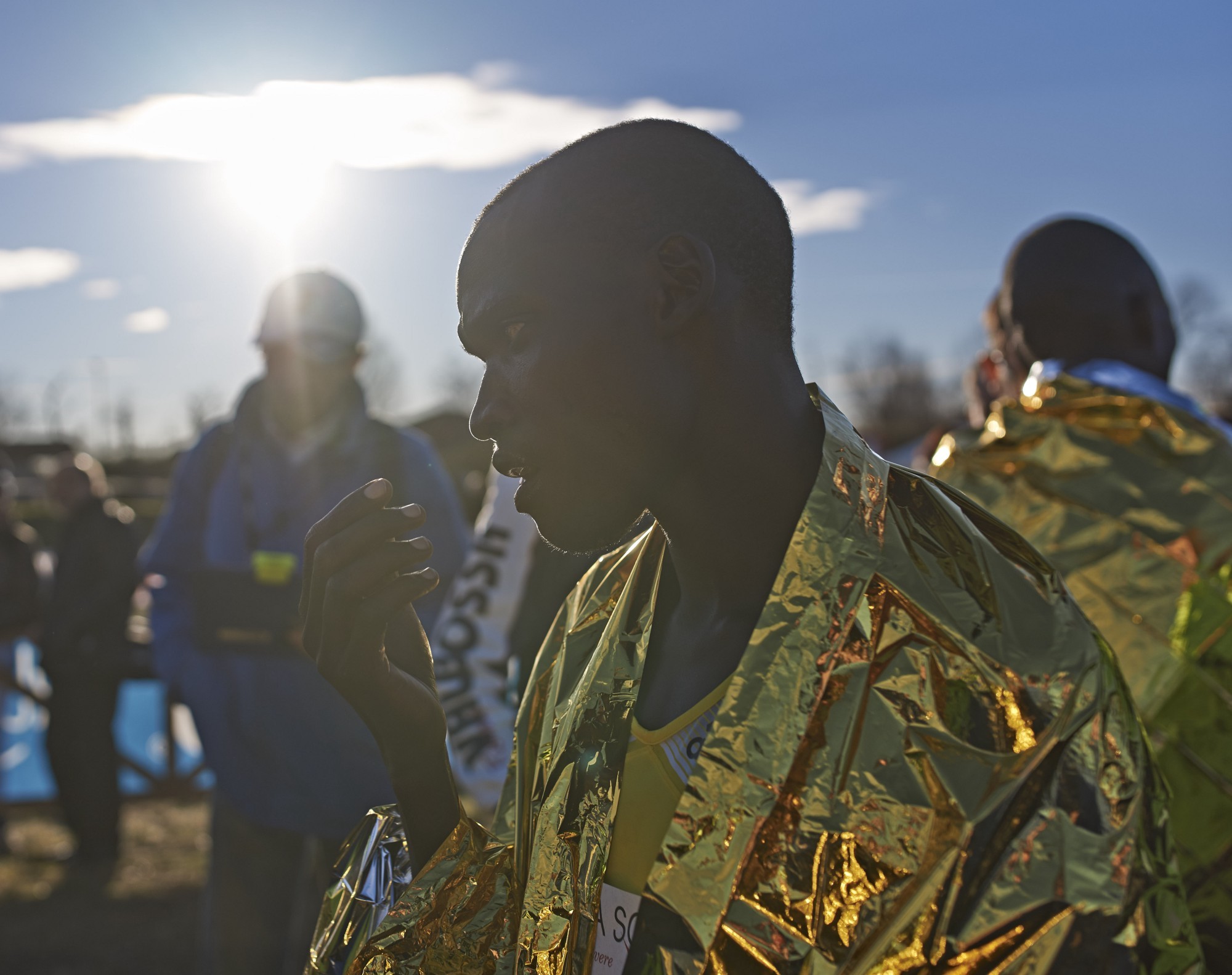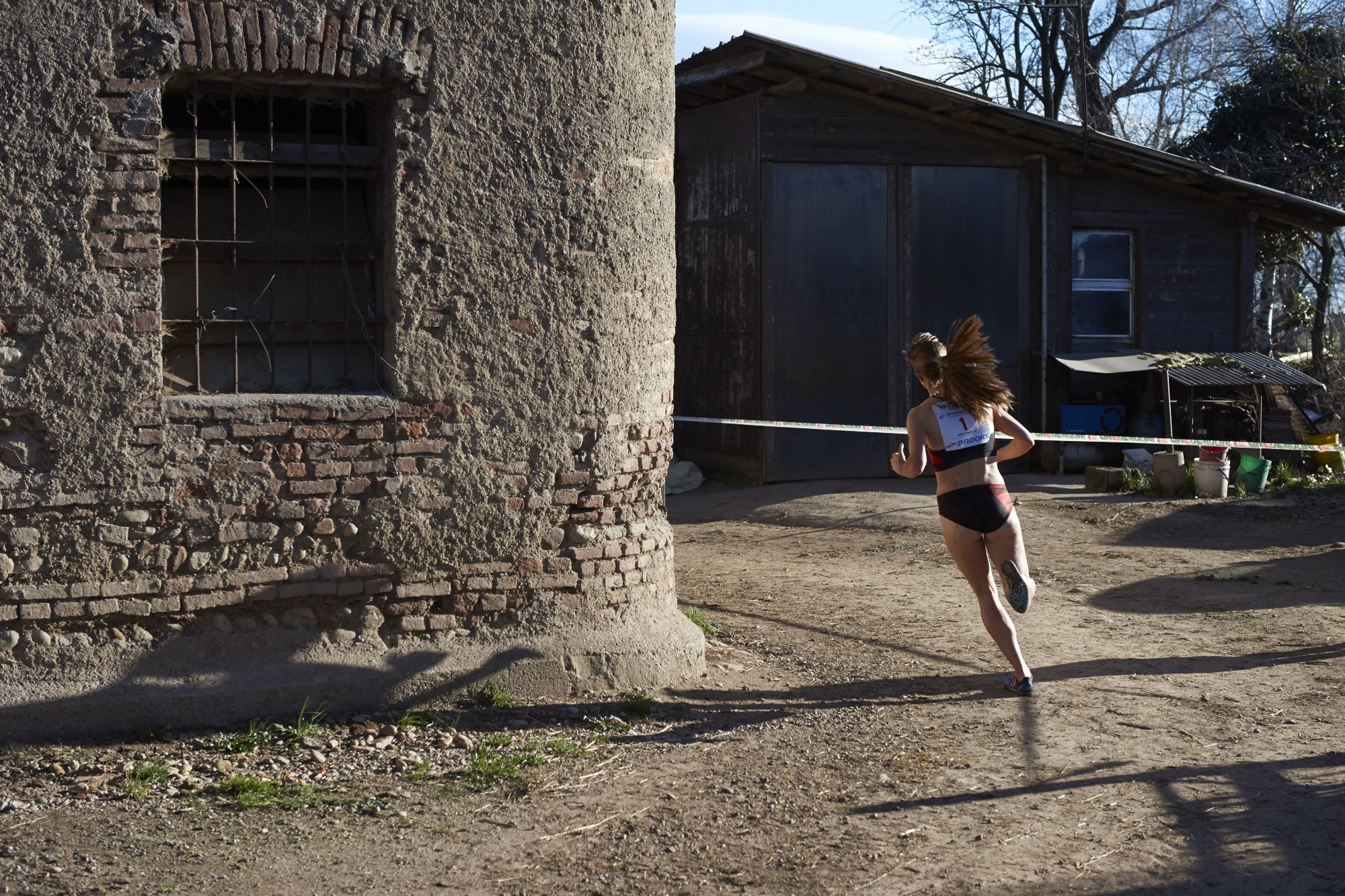
The Cinque Mulini
The “Five Mills” a unique cross country race near Milan that’s been running without fail since 1933.
We got off the train and started heading south, a long walk through an industrial area, through a bustling street market and into a park, full of families enjoying the first rays of spring. Five mills: how can you hide five mills? As we walked and walked, the warm Italian sun began to give way to a cold January evening. The clock passed 4 p.m.; how can you hide five mills?
There was no sign of even a solitary mill in the park. We climbed over a fence, hiked along an embankment and ended up on a farm track. A runner passed us; recreational, not an athlete the likes of which would be competing in the Cinque Mulini IAAF cross country race the following day. We didn’t harass him for directions, instead we kept going down the track, attentive to the scenes we were expecting to see: a giant water wheel, decrepit farm buildings, religious iconography and world class athletes. How can you hide five mills?
We came to a river. I ran up the bank, and saw it in front of me: Race tape, over there on the opposite shore — our saviour. We’d found the race, if not the five mills.

There’s no English version of the 5mulini.org website and no map, at least that we could find. It’s old-school: a race for people in the know. Back in the 60s, 70s and throughout the 80s it was one of the biggest cross-country races going, attracting the likes of Billy Mills, Kip Keino, Grete Waitz, Seb Coe and Frank Shorter. The main attraction were the mills — only two now — which drew the crowds, the TV cameras, corporate sponsors and the world’s best. The athletes would run through the buildings, the wheel slowly turning under the weight of water flowing down from the nearby Alps. The runners emerge to cross a narrow wooden foot bridge, then continue round the farm buildings, through a yard and through another building, passing through a doorway beneath a mural of the Virgin Mary. It was–is–a race with a character of its own: uniquely Italian, beautiful and poignant, and loaded with history. But much like the rest of the world, athletics is changing and the Cinque Mulini isn’t drawing the crowds or the international headlines it once did.
The race began in 1933 thanks to a local rivalry. A nearby town had created its own race, the Race of the Seven Towers and the the local sports club Unione Sportiva San Vittore Olona, itself founded in 1906 and still going strong today, wanted a slice of the action. “Here we didn’t have towers, we had mills on the river”, says Vito Garofalo, “so we invented this race, the Five Mills — the Cinque Mulini — that went around the river passing by five water mills. It started as a cross-country race, a local race, but it grew until it became one of the most international races in the world.”
Garofalo has been on the organising committee since the late 60s and knows everything there is to know of its history. It was never stopped, he says, even during World War Two when the Nazis occupied this fertile and industrious region of the northern Italy. Garofalo’s predecessor and former president of the Unione Sportiva San Vittore Olona, Peppino Galli goes on to explain that it was shortly after the war that the Cinque Mulini became an international fixture: “We invited the first athletes from Yugoslavia and one from North Africa. Then we went abroad and in 1965 Billy Mills, the Olympic Champion for 10,000m in Tokyo, he won. Then we started with the Ethiopians and the Kenyans and from that we can say, practically all the editions have been won by them. Many from England came across: Mike Turner was the first, then Bedford, then Sebastian Coe and Steve Ovett. They never won but they created good publicity for our race.”
In the days before email and international agents, how did a small race like the Cinque Mulini get athletes like Billy Mills to fly across the world for a thirty minute race? “In those days we wrote a letter to the national federation”, says Peppino Galli. “Later on we dealt through their representatives and managers who are mainly in Europe — and the cost increased a lot.”
It was the pictures of the old days that had brought us to Italy. The black and white photos of Frank Shorter ducking his way through a doorway, running over a straw covered floor, or Kip Keino, dressed all in white and looking imperious, striding along the river bank, a glowing beacon of distance running’s future. Few races can claim to be iconic — the Cinque Mulini is one of the few.

What’s funny is, the amateurs don’t even get to run through the mills. The one thing that drew us here — and you’d guess drew them — and it’s off limits. It’s only one small section, and yet it’s everything — where every photo you’ve ever seen from the race comes from, what every interview focusses in on. There are only two mills now, so where are the rest? “Originally when the race started, when there were five mills, the race didn’t go into the mills”, says Garofalo, “it just went past them. The idea to get the runners into the mills started in the fifties and what made the race so different. At the time the length of the course was cut short — at the same time, because of so-called progress, the mills weren’t used any more, and they were demolished, so there were only two mills left. The mills are unique though. I think it’s the only cross-country race in the world where the runners actually go into buildings.”

Honour: a nice word to use; an old-fashioned word perhaps, but one that resonates. For the runners too it must be an honour to follow in the footprints of such greats. Gemma Steel, the British distance runner, was back for her second attempt at the Cinque Mulini having placed sixthin2011.“Itfeelsquitesurreal,running through the mills”, she told us before the race. “I remember last time I was wearing my shades and I didn’t realise how dark it would be inside.” She learned from that mistake and placed second in 2014 behind 20-year old Kenyan Faith Kipyegon, the 2013 World Junior Cross Country champion.
When Seb Coe ran the race in 1980, it was at the end of a seven month winter in Italy, where he had spent the winter training for the Moscow Olympics. Legend has it that he contacted the Italian federation in search of a road race; when they suggested he participate in the Five Mills at San Vittore Olona, he mistook “Mills” for “miles” and assumed it was a road race. What he found was a 10km cross-country. In borrowed spikes he placed somewhere around 20th. That’s the beauty of cross-country to us as fans — sure there are specialists, but more than anything it’s always been a melting pot, where 1500m runners go up against 10,000m specialists. The Cinque Mulini even attracted the legendary Ugandan 400m hurdler John Aki Boa one year. The 1972 Olympic champion started fast, running with the front group for the first lap before fading to finish last.
This year the elite race attracted a broad spread of African talent, from Kenyan Paul Tanui, the world 10,000m bronze medallist, to world mountain running silver medallist Geoffrey Kusuro of Uganda. Seven men formed a group on the first lap; by the end of the third they were five. Come the final lap there were four: Tanui, Kusuro, Alex Kibet and Thomas Lokomwa, both of Kenya. Kibet attacked inside the mill but Tanui followed, then promptly counter-attacked. Kibet tried to respond but couldn’t. Tanui crossed the line in 29.59, just two seconds ahead of his countryman Kibet, who in turn was just two seconds ahead of Lokomwa, completing an all Kenyan podium.

This year was the 82nd running of the Cinque Mulini. While it has sponsorship, TV coverage and public participation, it’s clearly a different race to the one it was throughout the 60’s and into the 90’s. Sponsorship is harder to find, grabbing people’s attention is harder to do. They come, they run, they go home again — the elites aren’t the draw they once were. And yet, you can’t help thinking that with a little more nous, the Cinque Mulini — cross-country as a whole in fact — could reclaim its crown, pulling in thousands of spectators and the world’s greatest athletes. It just needs a spark of inspiration — the kind of spark that saw runners going through the mills in the first place. Perhaps the first step is to inspire a new generation of European athletes onto the country, to go toe-to-toe with the Africans. On that front, Unione Sportiva San Vittore Olona are doing a great job, providing races for even the tiniest kids.“We hope that with races like this we can increase the motivation for this speciality”, says Peppino Galli.
You can’t hide five mills, and you can’t hide the Cinque Mulini — with more local interest, it should regain the confidence it needs to demand the world’s attention and you have to feel that the world is ready to take notice. We put a premium on authenticity, heritage and heroism in the 21st century, and the Cinque Mulini has that in spades. “This is the 82nd anniversary”, says Galli. “Can it make 100? Of course it can.”

Jenny Simpson’s Postcard from Italy
Words by Jenny Simpson
I was only aware of the Cinque Mulini because of the wild stories my coach Mark Wetmore would tell about famous Americans running it in the past. I’m not sure I even believed he was telling the truth until later in my career when I looked it up online. There still isn’t much information around about the meet so it still holds some intrigue — hardly any of my peers had heard of the race before I went over this year.
It became an ambition of mine before my running days are over, that I really wanted to check it out for myself and add my name to the list of Americans who had dared to run the Cinque Mulini.
When I got to Italy and saw the course for the first time, my initial reaction was “this is absurd.” We were literally running through fields, in and out of ditches, and of course, through someone’s house and mills. I knew the course was different but seeing is believing.
Of course I knew that the race is steeped in history, but all of my understanding was thanks to Wetmore. Once we got to the athletes’ briefing, the race director and other people from the meet were eager to share with me their memories of the race and all the famous runners and moments they had witnessed. I’ll treasure those conversations and the chance to have my own small sentence in the story of Cinque Mulini.
When I finally got to race, I was surprised again by just how challenging the course was. The footing isn’t great and the ground is soft in addition to the unconventional nature of it. I went out pretty hard and the course delivered me a seriously humbling reality check. But the entire experience was so worth it and I have the best memories from the event — the day of the race is like a cross-country festival with tons of kids’ races and age group races, a lot like road races in the US but with a unique course. Maybe I’ll return someday so my future kids can run through the mills.
________________
Jenny Simpson placed third in Italy. It was a solid start to an incredible season in which she won the Diamond League series at 1500m, and became the second fastest woman in American history when she recorded 3:57:22 in Paris in July.
________________
This story is republished from Issue #00 of Meter magazine.
Words by Andy Waterman Photography by Camille McMillan